Carl C Greene
age ~81
from Manteo, NC
- Also known as:
-
- Carl Carlton Greene
- Carl Etal Greene
- Carl C Greeneor
- Carl G Reene
Carl Greene Phones & Addresses
- Manteo, NC
- Tobaccoville, NC
- Winston Salem, NC
- Tampa, FL
Us Patents
-
Equipment And Methods For Manufacturing Cigarettes
view source -
US Patent:20040118418, Jun 24, 2004
-
Filed:Dec 20, 2002
-
Appl. No.:10/326521
-
Inventors:Lloyd Hancock - Walnut Cove NC, US
Carl Greene - Winston-Salem NC, US
John Nelson - Lewisville NC, US
Vernon Barnes - Advance NC, US
Sydney Seymour - Clemmons NC, US
Balager Ademe - Winston-Salem NC, US -
International Classification:A24C005/12
-
US Classification:131/065000
-
Abstract:Cigarettes are manufactured using modified automated cigarette making apparatus. Those cigarettes possess smokable rods having paper wrapping materials having additive materials applied thereto as patterns. The additive materials, which can have the forms of liquid or paste formulations, are applied to a continuous paper web on the cigarette making apparatus. The formulation is applied to the paper web using application apparatus possessing rollers, and one of those rollers has a series of pockets in its roll face to receive additive formulation from a reservoir and to define the pattern of the formulation on the paper. A modified figure rail assembly and garniture entrance cone provide air flow toward the paper web being advanced through the garniture region of the cigarette making apparatus. Downwardly directed air exiting a plurality of air outlets in the finger rail create a zone of air turbulence the advancing paper web to maintains the paper web a distance away from the upper surface so that the additive material is retained on the paper web. Air exiting slots in the upper or top face of the garniture entrance cone also assist in maintaining the paper web away from the finger rail assembly. A radiant dryer is used to dry the additive material that has been applied to the paper web. The radiant dryer is located on one component of a two component assembly that is used to manufacture cigarettes. A first component of the two component assembly provides a source of paper web, applies additive material to that web in a pattern and dries the paper web; while a second component receives the paper web, supplies tobacco filler and manufactures a cigarette rod from the paper web and tobacco filler. Spectrometric techniques are used to ensure proper registration of the additive material on the cigarette rods so manufactured, and to ensure proper quality of those cigarettes.
-
Equipment And Methods For Manufacturing Cigarettes
view source -
US Patent:20040118420, Jun 24, 2004
-
Filed:Dec 20, 2002
-
Appl. No.:10/326539
-
Inventors:Vernon Barnes - Advance NC, US
Carl Greene - Winston-Salem NC, US
Lloyd Hancock - Walnut Cove NC, US
John Nelson - Lewisville NC, US -
International Classification:A24C005/32
-
US Classification:131/280000
-
Abstract:Cigarettes are manufactured using modified automated cigarette making apparatus. Those cigarettes possess smokable rods having paper wrapping materials having additive materials applied thereto as patterns. The additive materials, which can have the forms of liquid or paste formulations, are applied to a continuous paper web on the cigarette making apparatus. The formulation is applied to the paper web using application apparatus possessing rollers, and one of those rollers has a series of pockets in its roll face to receive additive formulation from a reservoir and to define the pattern of the formulation on the paper. A modified figure rail assembly and garniture entrance cone provide air flow toward the paper web being advanced through the garniture region of the cigarette making apparatus. Downwardly directed air exiting a plurality of air outlets in the finger rail create a zone of air turbulence the advancing paper web to maintains the paper web a distance away from the upper surface so that the additive material is retained on the paper web. Air exiting slots in the upper or top face of the garniture entrance cone also assist in maintaining the paper web away from the finger rail assembly. A radiant dryer is used to dry the additive material that has been applied to the paper web. The radiant dryer is located on one component of a two component assembly that is used to manufacture cigarettes. A first component of the two component assembly provides a source of paper web, applies additive material to that web in a pattern and dries the paper web; while a second component receives the paper web, supplies tobacco filler and manufactures a cigarette rod from the paper web and tobacco filler. Spectrometric techniques are used to ensure proper registration of the additive material on the cigarette rods so manufactured, and to ensure proper quality of those cigarettes.
-
Equipment And Methods For Manufacturing Cigarettes
view source -
US Patent:20040129281, Jul 8, 2004
-
Filed:Aug 22, 2003
-
Appl. No.:10/645996
-
Inventors:Lloyd Hancock - Walnut Cove NC, US
Vernon Barnes - Advance NC, US
Carl Greene - Winston-Salem NC, US -
International Classification:A24C005/32
-
US Classification:131/284000, 131/280000
-
Abstract:Cigarettes are manufactured using modified automated cigarette making apparatus. Those cigarettes possess smokable rods having paper wrapping materials having additive materials applied thereto as patterns. The additive materials, which can have the forms of liquid or paste formulations (e.g., aqueous formulations incorporating starch or modified starch), are applied to a continuous paper web on the cigarette making apparatus. The formulation is applied to the paper web using application apparatus possessing rollers, and one of those rollers has a series of pockets in its roll face to receive additive formulation from a reservoir and to define the pattern of the formulation on the paper. For example, additive material located in the recessed pockets of a first roller is transferred in a controlled manner to the roll face of a second roller in roll contact with that first roller; and the additive material on the roll face of the second roller is transferred to desired locations on the surface of the paper web. The formulation also can be applied to a continuous moving paper web using an application apparatus possessing four rollers. For example, additive material is applied to the roll face of a transfer roller due to roll interaction of that transfer roller with a pick-up roller; roll interaction of the transfer roller with an application roller causes transfer of the additive material from the transfer roller to the application roller; and additive material from the application roller is transferred to the paper web that passes between the application roller and a back-up roller. A radiant dryer is used to dry the additive material that has been applied to the paper web. The radiant dryer is located on one component of a two component assembly that is used to manufacture cigarettes. A first component of the two component assembly provides a source of paper web, applies additive material to that web in a pattern and dries the paper web; while a second component receives the paper web, supplies tobacco filler and manufactures a cigarette rod from the paper web and tobacco filler. Spectrometric techniques are used to ensure proper registration of the additive material on the cigarette rods so manufactured, and to ensure proper quality of those cigarettes.
-
Materials And Methods For Manufacturing Cigarettes
view source -
US Patent:20040237978, Dec 2, 2004
-
Filed:May 16, 2003
-
Appl. No.:10/439935
-
Inventors:Vernon Barnes - Advance NC, US
Lloyd Hancock - Walnut Cove NC, US
Carl Greene - Winston-Salem NC, US
Sydney Seymour - Clemmons NC, US
Balager Ademe - Winston-Salem NC, US
John Nelson - Lewisville NC, US -
International Classification:A24C001/42
A24C005/38 -
US Classification:131/284000
-
Abstract:Cigarettes are manufactured using modified automated cigarette making apparatus. Those cigarettes possess smokable rods having paper wrapping materials having additive materials applied thereto as patterns. The additive material can be applied as a coating formulation in an off-line manner to a continuous paper sheet web that is later used for cigarette manufacture. The additive material can be applied as a coating formulation in an on-line manner to continuous paper web moving through an operating cigarette making machine. The coating formulation is applied to the paper web using roll applicator techniques, ink jet printing techniques or electrostatic precipitation techniques. Liquid coating formulation are curable, and are virtually absent of solvent or liquid carrier. Radiation, such as ultraviolet or electron beam radiation, is used to solidify and fix polymerizable liquid components of the coating formulation that have been applied to the paper web. Heating and subsequent cooling of the coating formulation used to fix solid components of the coating formulation that have been applied to the paper web. Registration techniques are used to ensure proper positioning of the additive material on the smokable rods so manufactured, and to ensure proper quality of those cigarettes.
-
Materials, Equipment And Methods For Manufacturing Cigarettes
view source -
US Patent:20050076925, Apr 14, 2005
-
Filed:Oct 9, 2003
-
Appl. No.:10/682570
-
Inventors:Barry Fagg - Winston-Salem NC, US
Vernon Barnes - Advance NC, US
Sydney Seymour - Clemmons NC, US
Lloyd Hancock - Walnut Cove NC, US
John Nelson - Lewisville NC, US
Carl Greene - Winston-Salem NC, US
Balager Ademe - Winston-Salem NC, US -
International Classification:A24C001/26
-
US Classification:131060000, 131058000
-
Abstract:Cigarettes are manufactured using modified automated cigarette making apparatus. Those cigarettes possess smokable rods having paper wrapping materials having additive materials applied thereto as patterns. The additive materials, which can have the forms of liquid or paste formulations (e.g., aqueous formulations incorporating starch or modified starch), are applied to a continuous paper web on the cigarette making apparatus. The formulation is applied to the paper web using application apparatus possessing rollers a series of roller. For example, additive material is applied to the roll face of a transfer roller due to roll interaction of that transfer roller with a pick-up roller; roll interaction of the transfer roller with an application roller causes transfer of the additive material from the transfer roller to the application roller; and additive material from the application roller is transferred to the paper web that passes between the application roller and a back-up roller. A radiant dryer is used to dry the additive material that has been applied to the paper web. The radiant dryer is located on one component of a two component assembly that is used to manufacture cigarettes. A first component of the two component assembly provides a source of paper web, applies additive material to that web in a pattern and dries the paper web; while a second component receives the paper web, supplies tobacco filler and manufactures a cigarette rod from the paper web and tobacco filler. An alternate assembly system provides a source of paper web, applies additive material to that web in a pattern, dries the paper web, and winds the treated paper web onto a bobbin; and that bobbin is later used to provide a source of paper web on a cigarette making machine unrolls that bobbin, receives the treated paper web from that bobbin, supplies tobacco filler and manufactures a cigarette rod from the paper web and tobacco filler. Spectrometric techniques are used to ensure proper registration of the additive material on the cigarette rods so manufactured, and to ensure proper quality of those cigarettes.
-
Equipment And Methods For Manufacturing Cigarettes
view source -
US Patent:20070051381, Mar 8, 2007
-
Filed:Oct 6, 2006
-
Appl. No.:11/544379
-
Inventors:Lloyd Hancock - Walnut Cove NC, US
Carl Greene - Winston-Salem NC, US
John Nelson - Lewisville NC, US
Vernon Barnes - Advance NC, US
Sydney Seymour - Clemmons NC, US
Balager Ademe - Winston-Salem NC, US -
International Classification:A24C 1/04
-
US Classification:131284000, 131034000, 131280000
-
Abstract:Cigarettes are manufactured using modified automated cigarette making apparatus. Those cigarettes possess smokable rods having paper wrapping materials having additive materials applied thereto as patterns. The additive materials, which can have the forms of liquid or paste formulations, can be applied to the paper web using application apparatus possessing rollers. One of those rollers can have a series of pockets in its roll face to receive additive formulation from a reservoir and to define the pattern of the formulation on the paper. A radiant dryer can be used to dry the additive material that has been applied to the paper web. The radiant dryer can be located on one component of a two component assembly that is used to manufacture cigarettes. Spectrometric techniques can be used to ensure proper registration of the additive material on the cigarette rods so manufactured, and to ensure proper quality of those cigarettes.
-
Apparatus For Applying Liquid Additives To A Continuous, Multifilament Tow
view source -
US Patent:48503010, Jul 25, 1989
-
Filed:Apr 4, 1988
-
Appl. No.:7/176965
-
Inventors:Carl C. Greene - Winston-Salem NC
Joseph H. Warden - Lewisville NC -
Assignee:R. J. Reynolds Tobacco Company - Winston-Salem NC
-
International Classification:B05C 106
-
US Classification:118255
-
Abstract:Apparatus for applying a liquid additive to a continuous, multifilament tow includes a nonrotating tubular body and a nonmetallic element associated with the wall of the tubular body for contacting the multifilament tow as it is moved across the surface of the nonmetallic element. The nonmetallic element has an arcuate, external surface that is provided with a plurality of spaced openings formed in the nonmetallic element and which are in communication with an enclosure within the tubular body. Liquid additive is supplied to the enclosure and is transferred to the arcuate, external surface via the plurality of spaced openings for application to the multifilament tow as it contacts the arcuate, external surface of the nonmetallic element.
-
Zero Tension Web Unwinder Apparatus And Method
view source -
US Patent:57093520, Jan 20, 1998
-
Filed:Jul 29, 1996
-
Appl. No.:8/681737
-
Inventors:Jeffery Kane Rogers - Winston-Salem NC
Gary Micheal Jackson - Winston-Salem NC
Wallace Ray Lassiter - Winston-Salem NC
Carl Carlton Greene - Winston-Salem NC -
Assignee:R. J. Reynolds Tobacco Company - Winston-Salem NC
-
International Classification:B65H 23185
-
US Classification:2424171
-
Abstract:An apparatus and method for the tensionless unwinding of a gossamer web of material from a bobbin uses a servo control system connected between the servomotors of a web handling apparatus and a bobbin unwinder for controlling the unwinding speed of the bobbin unwinder in relation to the take-up speed of the web handling apparatus. A pulsed infrared sensor is used to sense the web position in a loop between the unwinder and the web handling apparatus and supply a feedback signal to the servo control system for maintaining the web in a substantially untensioned state. A flow of air is impinged upon the web adjacent the sensor to prevent unwanted web movement due to ambient air currents and other transitory forces on the web.
Resumes

Carl Greene
view source
Carl Greene
view source
Carl Greene
view source
Carl Greene
view source
Carl Greene
view source
Carl Greene
view source
Carl Greene
view sourceSkills:
Microsoft Excel

Carl Greene
view sourceIsbn (Books And Publications)


Name / Title
Company / Classification
Phones & Addresses
Assistant Sec.
Centex Real Estate Corporation
Single-Family House Construction
Single-Family House Construction
2149815000
MONEY BAGS, INC
Wikipedia References

Carl R. Greene
Flickr
Classmates

Carl Greene
view sourceSchools:
Munfordville High School Munfordville KY 1959-1963
Community:
Kenneth Ralston, William Coats, Larry Webb

Carl Greene
view sourceSchools:
Munfordville High School Munfordville KY 1958-1962
Community:
Kenneth Ralston, William Coats, Larry Webb

Carl Greene
view sourceSchools:
Webster Academy Oakland CA 1966-1967, Stonehurst Elementary School Oakland CA 1967-1968, Markham Elementary School Oakland CA 1968-1973, King Estates Junior High School Oakland CA 1973-1976, Far West High School Oakland CA 1976-1979

Carl K. Greene
view sourceSchools:
London Elementary School London KY 1954-1963, London High School London KY 1963-1967
Community:
Dalene Leland, Russell Anderson, Bill Poole, Everett Baker, Freddie Abernathy

Carl Greene
view sourceSchools:
Burke High School Charleston SC 1967-1971
Community:
Anthony Scott, Richard Chisolm

Carl Greene
view sourceSchools:
Santa Fe High School Edmond OK 2001-2005
Community:
Katt Campbell, Sean Harmon, Heather Wissler, Mary Jane, Sean Walker, Traci Christy, Chelsea Gockel, Lacey Pierce, Joshua Lovett

Carl Denver Greene
view sourceSchools:
Demopolis High School Demopolis AL 1985-1989

Carl Greene
view sourceSchools:
Harry Wood High School Indianapolis IN 1966-1970
Community:
Pauline Ingalsbe, Ruth Carter, Trenda Conn, Samuel Washington
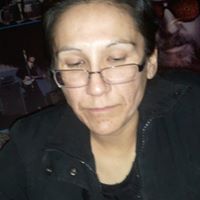
Carl Greene
view source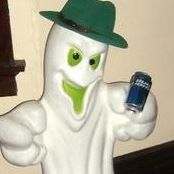
Carl Greene
view source
Carl Greene
view source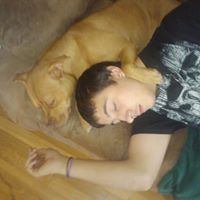
Carl Greene
view source
Carl D Greene
view source
Carl Greene
view source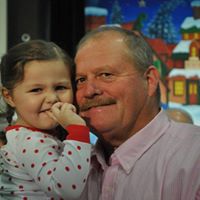
Carl Greene
view source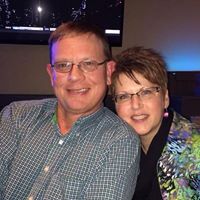
Carl Greene
view sourceYoutube
Googleplus

Carl Greene
Work:
Phi Beta Sigma Fraternity, Inc.
Zeta phi beta
Prince hall mason
Shriners Hospitals for Children
Shriners Hospital
Multi level marketing
Network marketing
Zeta phi beta
Prince hall mason
Shriners Hospitals for Children
Shriners Hospital
Multi level marketing
Network marketing
Education:
Demopolis High School, John Essex High School, Alabama State University, The University of Alabama, Alabama Agricultural and Mechanical University, Auburn University, Tuskegee University
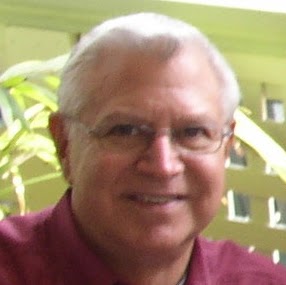
Carl Greene
Lived:
Palm Beach Gardens, FL
Tampa, FL
Dallas, TX
San Francisco, CA
Greenville, SC
Atlanta, GA
Tampa, FL
Dallas, TX
San Francisco, CA
Greenville, SC
Atlanta, GA
Education:
Palm Beach High School, University of Florida

Carl Greene

Carl Greene

Carl Greene

Carl Greene

Carl Greene
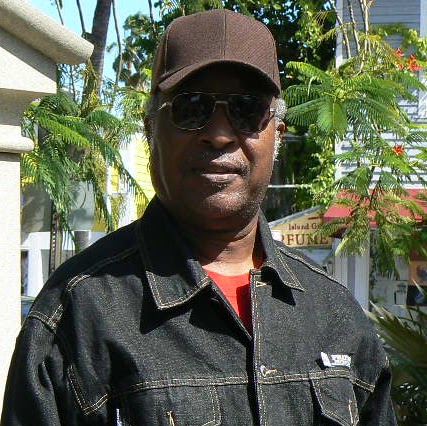
Carl Greene
Myspace
Get Report for Carl C Greene from Manteo, NC, age ~81




















